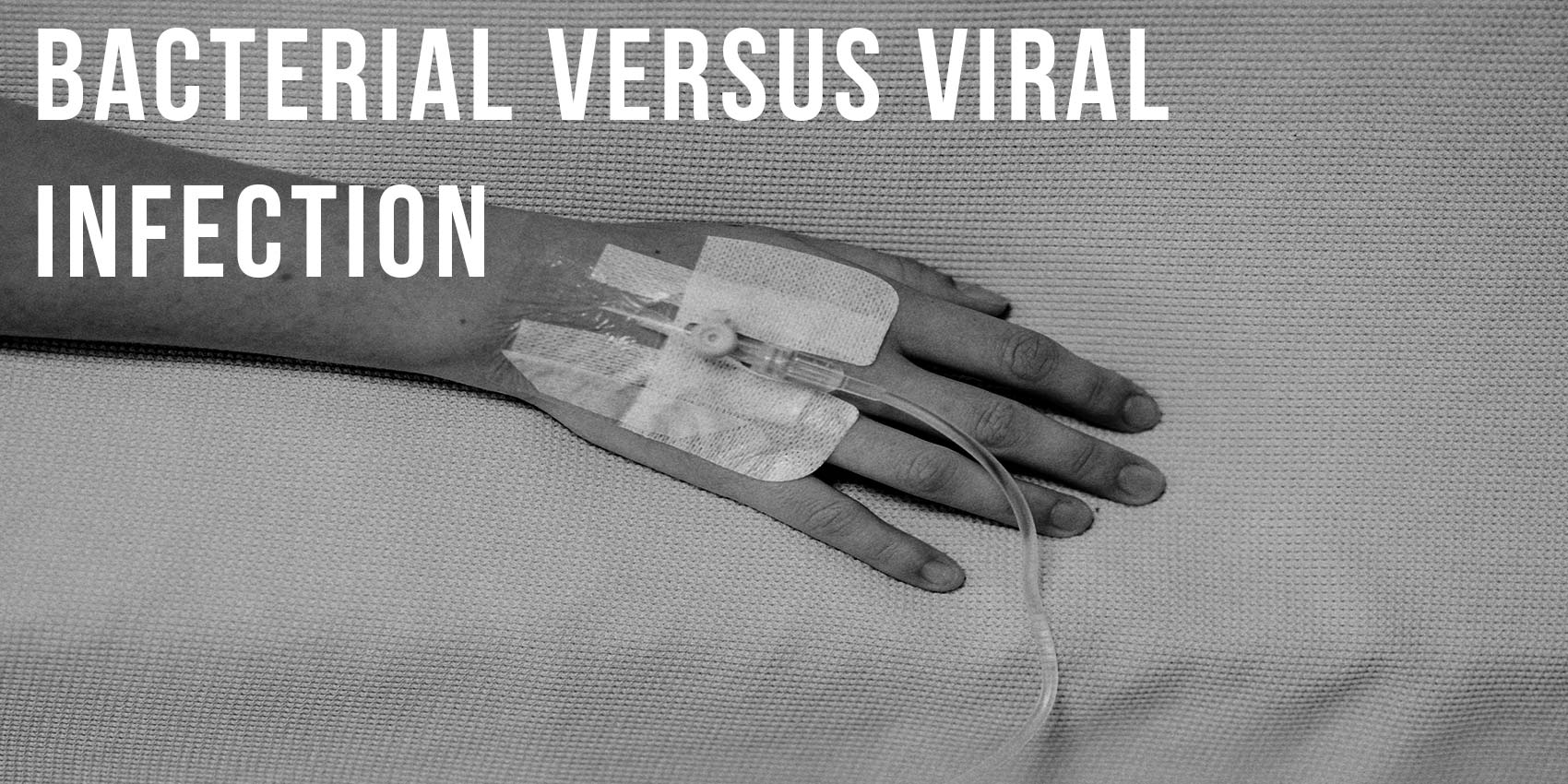14 Sep Bacterial versus viral infection

What’s the difference?
Very simply put, a bacterial infection is caused by bacteria while a viral infection is caused by a virus… no shocker there! Many of the diseases they cause can often have very similar symptoms. However, a virus and bacteria are very different in structure, and therefore, different in treatment.
A bacteria is basically a complex single celled structure that can live in a variety of different environments. Most bacteria are harmless to humans [fewer than 1% cause human diseases (www.webmd.com)] and some actually help you digest your food (heard the term “pro-biotic” lately?). Antibiotics are used to treat bacterial infections that you don’t want like strep.
A virus is very small—the largest virus is smaller than the smallest bacteria—and it needs a “host” to reproduce. Thus it attaches itself to your cells and attacks the cell so that the cell is taken over by the virus. The common cold is a virus but so is HIV and the bubonic plague! Through vaccines the medical community has been able to get rid of many diseases such as measles, chickenpox and polio, BUT so many viruses still exist that can not be vaccinated against… such as the common cold and HIV.
What’s the deal with antibiotics and contagion?
It usually takes 48 hours after starting antibiotics until you will not be contagious IF you really had a bacterial infection (which responds to antibiotics) and not a viral one (in which case antibiotics are useless).
Overuse of antibiotics in recent years is producing strains of bacteria that are particularly hard to treat. Thus, doctors should only prescribe antibiotics when they are certain (through testing) of a bacterial infection and you should ALWAYS complete the course of antibiotics even though you may feel better before you are done taking them. If you discontinue use prematurely, you are allowing the “tougher” bacteria to survive—the ones that did not die right away from the antibiotic. This is how drug resistant bacterial infections can develop (meaning the drugs do not work on the infection). If you quit the medicine early, the infection may return because the leftover bacteria are likely to be the ones that were antibiotic resistant.
(Source: https://www.ncbi.nlm.nih.gov/pmc/articles/PMC151721/)
It’s also important to know a few things about antibiotics before you use them.
First of all, you have a balance of bacteria in your gut. You have “good bacteria” that eat certain foods in your gut that you may or may not be able to digest. You also have “bad bacteria” that serves a purpose as well. When this system is not in balance, neither are you. When you take antibiotics you destroy the balance of bacteria in your gut because antibiotics also destroy the healthy bacteria we need.
Second, when you take antibiotics when you don’t need them, or don’t complete the full course of antibiotics when you are given them, you actually help bacteria strains to become stronger. When you take antibiotics for the wrong reasons, weaker bacteria are killed by the antibiotics but the stronger ones survive, and multiply. This creates bacteria that are resistant to antibiotics, and that’s a problem!
When you have a cold, the flu or a sore throat antibiotics are not necessary and will do more harm than good for the reasons written above. In such cases your best bet is to allow your immune system to do its job… so go ahead and check out the Immune System link. And when your body is fighting something—whether a cold or something that needs antibiotics—help your body to fight it by getting plenty of rest and fluids. To learn more about how to support your body and prevent illnesses read about SuperCell Phil and his journey throughout your ten body systems here.




Post Question:
Name 3 health habits that you do to keep you free from viruses and bacteria.
Answer the post question here
What's being said